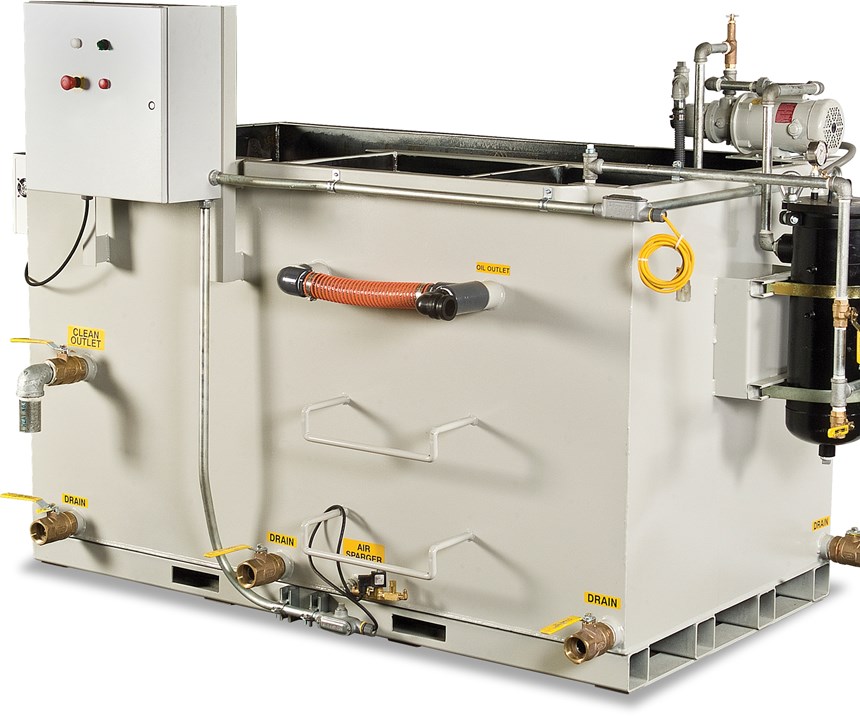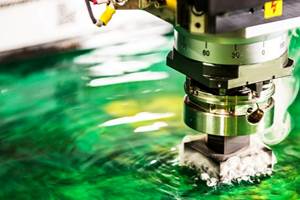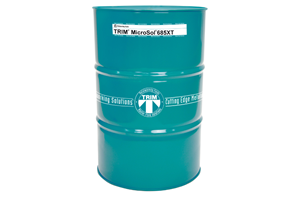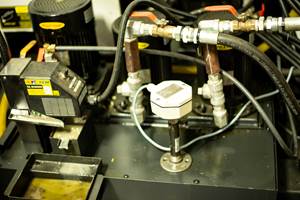Coolant Recycling System Improves Tool Life, Reduces Costs
This Canadian aerospace manufacturer cut coolant costs by 75 percent by installing a PRAB Guardian coolant recycling system, eliminating terrible smells in the process.
As a supplier to some of the world’s largest aerospace companies, Koss Aerospace has taken a number of key steps to enhance overall efficiency and eliminate waste by committing to lean manufacturing, continuous improvement and green initiatives. Among those steps was the addition of a PRAB Guardian coolant recycling system to address cutting fluid capacity issues and to improve other aspects of the operation.
Drowning in Coolant Costs
Established in 1975 in Ontario, Canada, Koss Aerospace is a vertically integrated Tier-One manufacturer of aircraft components and assemblies for commercial aerospace and military customers worldwide. With its in-house machining, processing and assembly capabilities, the company produces various structural parts and landing gear components; ribs and spars; floor and crossbeams; winglets; bulkheads; seat tracks; and stringers. Koss Aerospace also offers integrated manufacturing solutions for high-speed, multi-axis machining; complete metal finishing; kitting; and program and supply chain management.
While the shop was succeeding in many ways, one area that needed attention was the excessive production of waste cutting fluid, which was accompanied by the strong, foul odor caused by bacteria and fungus in the spent coolant. The company’s recycling process involved a simple but labor-intensive coalescence system that required a lot of downtime for sump maintenance. The system lacked the capacity to handle all of the company’s 26 machining centers, which have an average sump size of 500 liters, the largest of which has a 1,620-liter capacity.
Because the old system could not recycle this amount of fluid, the company was disposing of the excess spent coolant (which involved moving the fluid around with a mobile sump cleaner) and incurring significant haul-away costs. In total, Koss Aerospace was discarding coolant at a rate of 4 totes (or 4,000 liters) per week.
Founder and President Drago Cajic, Vice President David Cajic and Maintenance Manager Alexandre Blinov had heard about PRAB several years earlier and recognized the name while researching new recycling solutions. The ideal solution would be easy to use and capable of cleaning the company’s coolant to maximum capacity. They explored several options and ultimately chose the Guardian system due to its large capacity, ease of maintenance and potential for significant coolant savings. The system also offered additional options including the Coolant Manager, an ozone generator designed to address the issues associated with the growth of bacteria, fungus and mold.
Reducing Waste, Reducing Cost
Mr. Alexandre worked with PRAB’s fluid filtration specialist Ben McNinch and engineer Chris Jones to put together a specific solution for the company’s needs. After the Cajics gave their final approval, Mr. Blinov installed the system while PRAB Service performed the final inspection and personnel training to ensure proper operation prior to startup. Because the Guardian system only required connections for water, air and power, it was up and running within two days.
Koss Aerospace began seeing operational improvements almost immediately:
- Higher-quality coolant reduce the need for machine maintenance and extended tool life.
- During preventative maintenance, the machine sumps are not down as long as the previous sumps were, resulting in smoother production.
- The system eliminates the process of moving fluid around the shop with a mobile sump cleaner, because spent fluid from each machining center is pumped through a dirty-transfer cart directly to the Guardian. From there, the Guardian has a clean return system which pumps recycled coolant back to the machines.Reduced maintenance time has reduced the labor cost.
- Thanks to the reduced downtime, productivity and efficiency have increased, reducing customer lead time on parts.Haul-away costs are lower because there is no longer a need to dispose of excess fluid that went above capacity, as there had been.
The combined savings from coolant consumption and spent fluid disposal has been significant. With its previous coolant recycling system, Koss Aerospace consumed 4 drums (832 liters) of new coolant oil and disposed of 4.5 totes (4,500 liters) of waste fluid every seven to eight days, on average. Now, it takes the company an average of 28 days to consume the same amount of new coolant and 83 days to dispose of the same amount of waste.
From the engineering department to the finance department, the shop’s employees have noticed a difference throughout the plant since the installation of the coolant recycling system. “With the new system, we have seen around a 75-percent savings on new coolant purchases,” Mr. Blinov says.
In addition to the cost savings, perhaps the most apparent difference has been an end to the unpleasant smell caused by noxious coolant.
Related Content
Oelheld Coolant Increases Metal Removal Rates
The odorless coolant is said to offer increased removal rates, lower electrode wear, excellent surface qualities, lower refill quantities and longevity to provide lower overall operating costs.
Read MoreMaster Fluid Solutions Semisynthetic Coolant Inhibits Corrosion
Trim MicroSol 685XT is designed to provide enhanced corrosion inhibition on all ferrous and nonferrous metals.
Read MoreManaging Coolant with Skimmers, Refractometers and More
Bacteria-infected coolant harms machines and sickens machinists. Coolant management technologies like skimmers and automated systems counter this tendency.
Read MoreSTLE Opens Registration for 2024 Annual Meeting
The Society of Tribologists and Lubrication Engineers’ 2024 STLE Annual Meeting & Exhibition will take place May 19-23 at the Minneapolis Convention Center in Minneapolis, Minnesota.
Read MoreRead Next
The Cut Scene: The Finer Details of Large-Format Machining
Small details and features can have an outsized impact on large parts, such as Barbco’s collapsible utility drill head.
Read More3 Mistakes That Cause CNC Programs to Fail
Despite enhancements to manufacturing technology, there are still issues today that can cause programs to fail. These failures can cause lost time, scrapped parts, damaged machines and even injured operators.
Read More


















.png;maxWidth=300;quality=90)
.png;maxWidth=300;quality=90)









